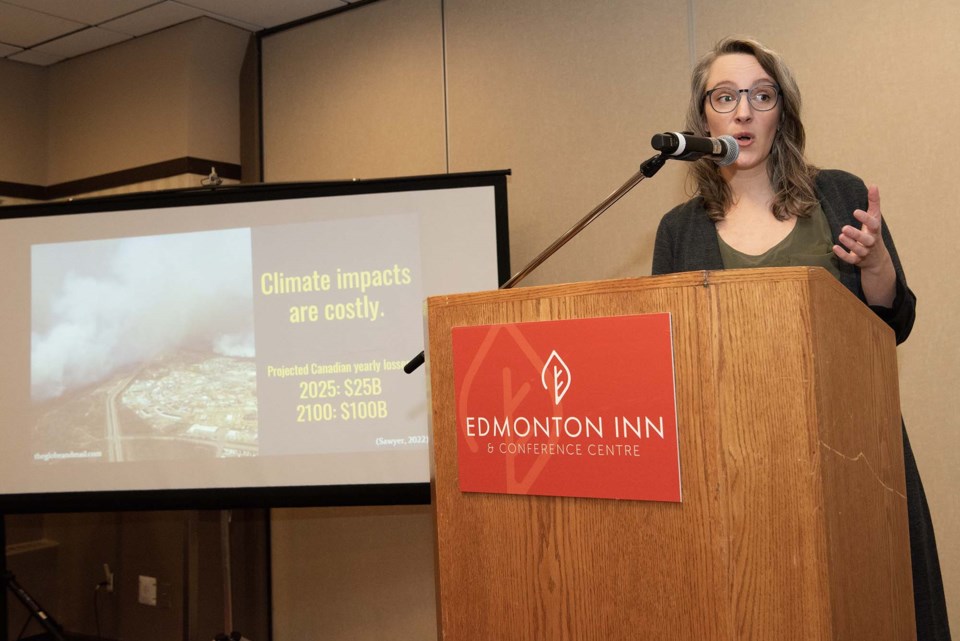Canadians can’t keep calling in the troops to bail them out of climate disasters such as fires and floods, say experts at a recent regional conference.
About 35 people were at the Edmonton Inn March 25 for the Edmonton United Services Institute’s free annual symposium. Another 30 watched the event online.
The institute, which includes members from Sturgeon County and St. Albert, is a volunteer organization which promotes public education on defence issues. This year’s symposium was about the natural disaster mitigation, particularly in an age of climate change.
National Defence says the number of times Canadian troops have been deployed to help communities ravaged by natural disasters has doubled every five years since 2010, said symposium speaker and historian Norm Leach. Although Canadians might believe the military has unlimited resources for disaster response, it doesn’t — Canada’s whole military could fit inside the Fort Hood military base in Texas.
“The military has indicated they are at the end of their rope,” Leach said, and were at risk of collapse unless something changed.
Importance of adaptation
Climate warming has made natural disasters such as forest fires more frequent and more intense, said Sarah Kehler, a senior research associate with the University of Alberta’s Climate Adaptation and Resilience Lab and speaker at the symposium — see the 2021 Lytton wildfire as an example.
Climate change means Alberta now has drier forests, more lightning strikes, and a longer wildfire season, symposium speaker and deputy director of emergency management for the Regional Municipality of Wood Buffalo Erin Sieger said in an interview. It also means more floods from ice jams, such as the one that happened in Fort McMurray in 2020.
“We evacuated over 13,000 people,” she said of that 2020 flood, as the whole downtown was under water.
“A lot of the people didn’t know they were being evacuated until the RCMP were banging on their doors.”
Troops are meant for fighting and generally aren’t trained for disaster relief, symposium speaker and emergency management specialist Ron Kuban said in an interview. Deploying troops uses up resources that aren’t then available for defence and can discourage communities from investing in disaster response. Troops also take on mental and physical burdens from the struggles that come with seeing a catastrophe up close.
Infrastructure solutions can guard against disaster, but they can also encourage complacency, Kehler said — a berm can stop a flood, but it can also encourage people to build homes next to the berms, putting them at risk if the berm fails. She recommended policy solutions instead, such as preserving wetlands (which absorb floodwaters) and not building in floodplains.
While the military was giving troops more training in disaster relief, Kuban said the best solution was to build capacity at the community level so that we don’t have to call in the troops. Cuba has a network of volunteers in each neighbourhood who are trained in what to do in the event of a hurricane, for example, which includes spreading warnings, helping with evacuations, and doing damage assessments.
Sieger said Fort McMurray has installed berms and bought out or elevated properties in flood-prone areas to guard against ice jams. They also have a network of volunteers ready to set up evacuation centres and an active flood-prevention education campaign, one that encourages residents to have go-bags full of essentials in the event of a sudden evacuation. The community also has an active FireSmart program to help residents reduce their risk from wildfires.
Kuban called for a return to civil-defence thinking, where we build capacity in communities to respond to local emergencies.
“We have to work as a community or we fail as a community,” he said.
Footage from the symposium will be available at eusi.ca later this year.




